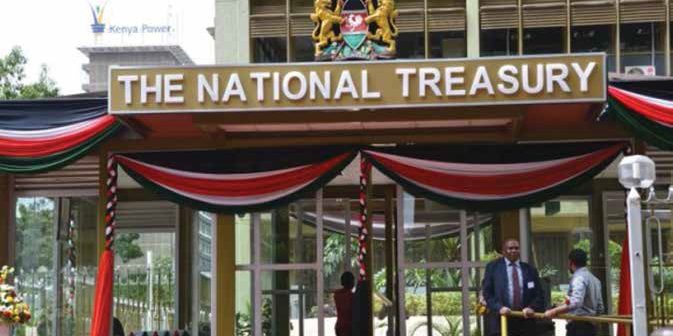Is the State exposing its soft underbelly?
Is the State exposing its soft underbelly on matters sovereignty?
In recent times, the Kenyan government has come under heavy criticism both within and without, on its unfettered appetite for borrowing. Historically, the government has been trying to juggle between internal borrowing and the more cheap but conditional external debts. In financial terms, domestic borrowing is an arm’s length transaction but economically,
the lucrative interest rates offered by the government to lending institutions lead to inflationary tendencies, besides restricting credit available to private borrowers. Whether to borrow or otherwise is not really the issue here, as debt financing is an inevitable catalyst
to spur any economic development, but the jinx is the level of debt in relation the country’s GDP. Experts believe that when debt surpasses 45% of the GDP, then the country could be overleveraged. Another school of thought believes that as long you borrow for infrastructure projects
as opposed to recurrent expenditure, no level of loan is too high. This article tends to show why the government has been keen in partnering with private sector to undertake mega projects as opposed to outright borrowing and why overreliance on PPPs could threaten the very core of a
country’s sovereignty.
What exactly is a PPP?
The World Bank PPP Knowledge Hub, defines a Public Private Partnership
as
A long-term contract between a private party and a government entity,
for providing a public asset or service, in which the private party bears significant risk and management responsibility and remuneration is linked to performance.
This definition clearly portrays a picture of a private partner playing the role of a financier as well as an operator, an actor who has to deliver a good job so as to minimize his risk as bearer of the latter. Needless to say that within the agreement, the financing partner delivers the service such that the service delivery objectives of the government are aligned with the profit objectives of the private partner. Furthermore, the effectiveness of the alignment depends on an adequate transfer of risk to the private party.
The most notable advantage of PPP is that apparently some government projects stall in the middle due to budget cuts in favor of recurrent funding; and since the projects to be funded through PPP tend to be more specific, there is less quantum in the overall burden.
The table below shows the immense opportunities that are available on this
platform of project-funding arrangements and the potential impact to country’s GDP growth.
Opportunities for Infrastructure
Investments 2012-2020
SECTOR AMOUNT IN USD M
Energy 19,808 (power and others)
Ports 4,800
Roads 9,000
Water and sanitation 4,567
Railways 7,248
Airports 906
Tourism 2,050
ICT 7,850
Local Government 2,000
Housing 2,901
Public Works 1,000
Lamu Port Corridor 3,723
TOTAL NEEDS 62,176
AVAILABLE 25,000
(GOK – 2012 – 2020)
FUNDING GAP 37,000




